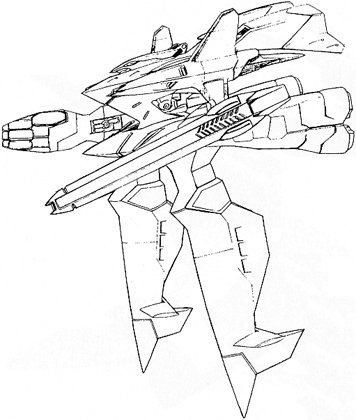Model number: AM-004A
The unfairly-maligned Iris Corporation had garnered a reputation for designing unusual mobile weapons in the post-Interregnum period, and perhaps more infamously, another for passing them off to anyone with cash on hand. One of Iris' last major inventions, the Tesla drive, proved an incredible boon to their production of mobile weapons. By allowing for nearly lossless conversion of electrical energy into thrust, as well as with a minimum of moving parts, the Tesla drive's modest output is still fully capable of providing sufficient lift to sustain level flight even for heavy objects, including mobile weapons. With technical and material support from the Vanguard Horizon organization, Iris' waning Flag series was effectively shelved for the creation of a new type of mobile weapon - the 'armored module'. The Lion, designated AM-004A, is the first successful armored module to reach mass production. Compared to a mobile suit, an amored module is much more simple, with significantly less complex mechanical equipment. As the earliest model of armored module, the Lion appears to have more in common with a fighter aircraft than a mobile suit, with only rudimentary limbs and no faculty for walking at all (its "feet" even have aviation-type landing gear). The Lion's legs are purely for mobility control in flight, and the pair of simple arms has very little manual dexterity, serving primarily to allow easier aiming of mounted weaponry. The sleek and aerodynamically-sound shape of the body allows the Lion a significant degree of lift - combined with the Tesla drive's great thrust output, the Lion is one of the fastest flying mobile weapons currently in production. Its maneuverability is somewhat lacking in comparison, although a skilled pilot should have no problem flying circles around a ground-based mobile suit. The Lion's extremely lightweight composite armor offers rather mediocre protection, however, making the armored module quite reliant on its ability to avoid enemy fire in combat. The extreme simplicity and mechanical reliability of the Tesla drive, combined with its excellent performance as a flight system, has raised some eyebrows in the defense sector as being "too good to be true", however, and rumors about the origins of the Tesla drive being anywhere but an Iris research laboratory continue to this day.
Burst railgun Front detail Landing configuration Rear view |



